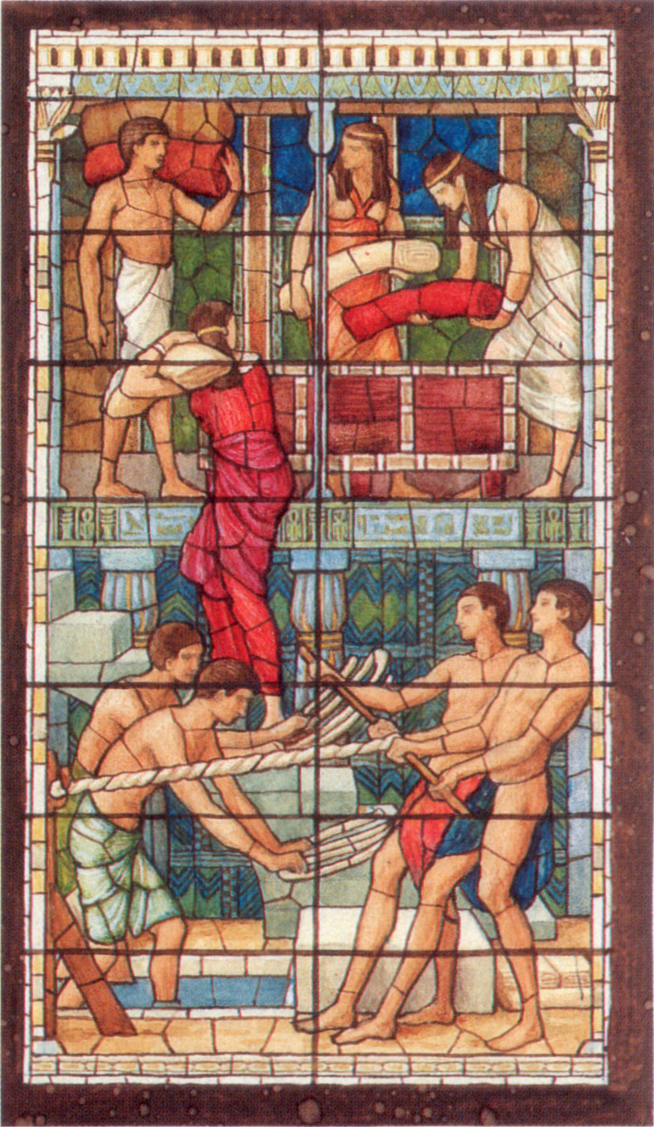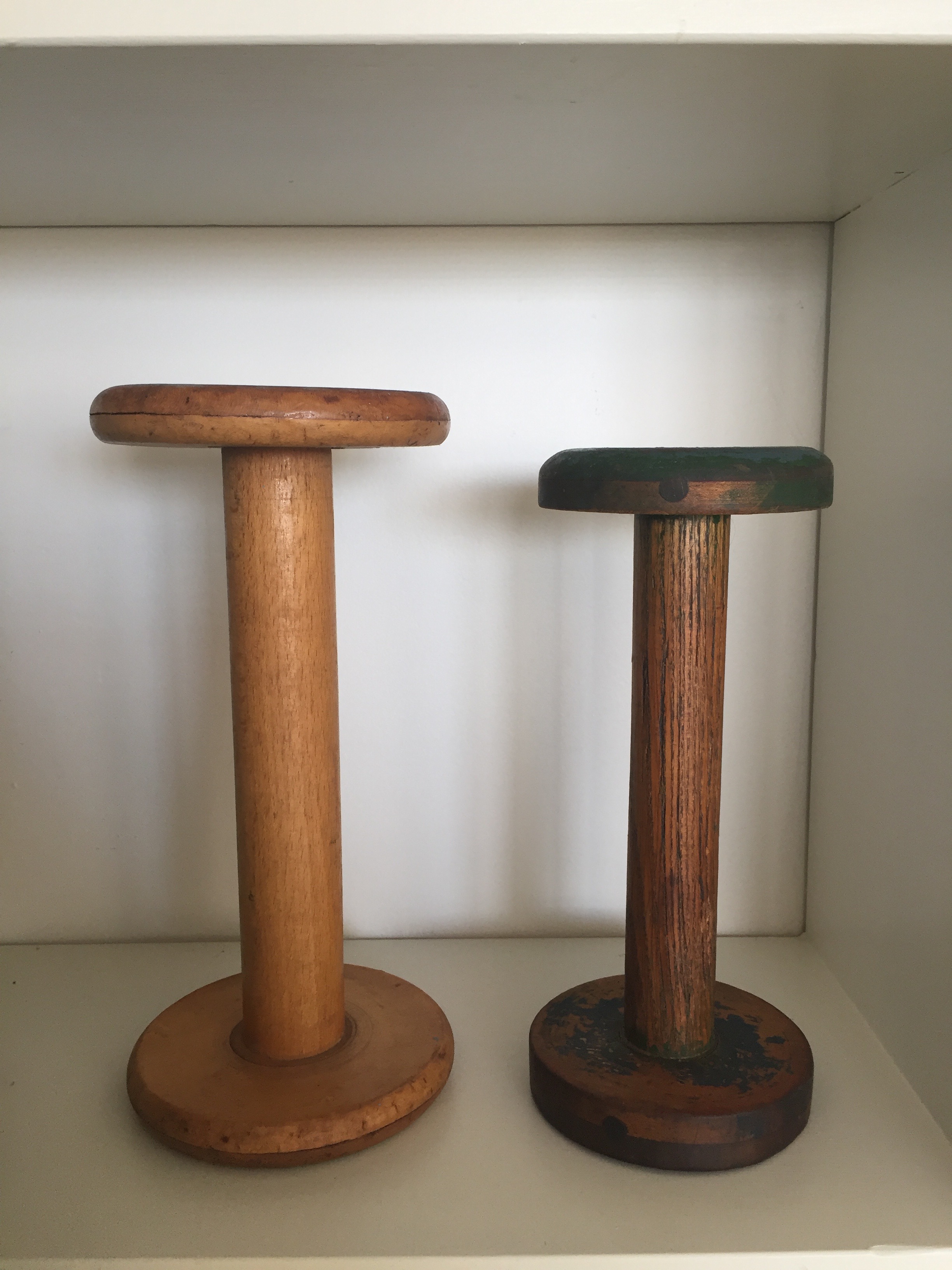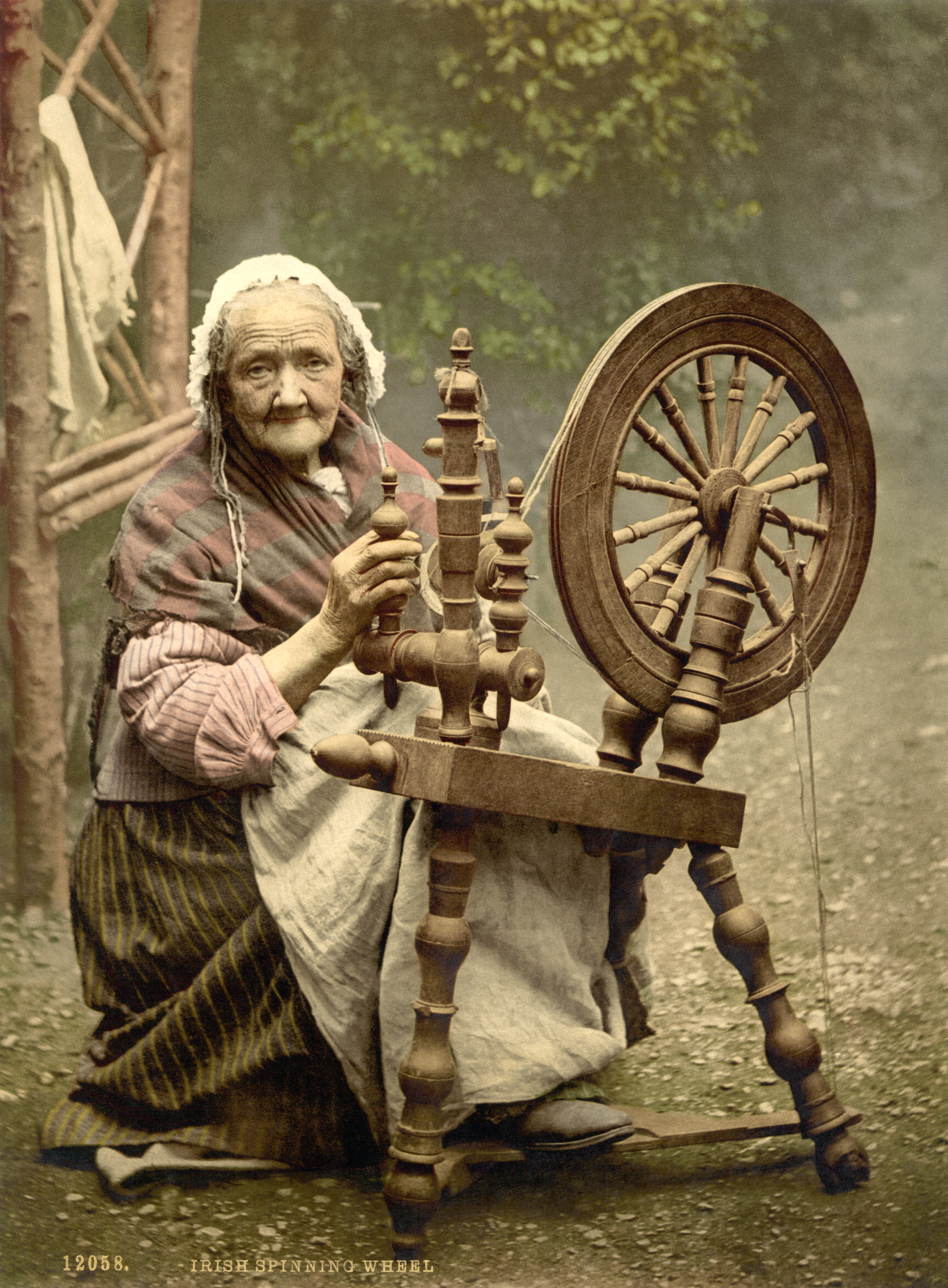|
Plying
In the textile arts, plying (from the French verb ''plier'', "to fold", from the Latin verb ''plico'', from the ancient Greek verb .) is a process of twisting one or more strings (called strands) of yarn together to create a stronger yarn. Strands are twisted together in the direction opposite that in which they were spun. Plied yarns will not unravel, break, or degrade as easily as unplied yarns. When enough twist is added to the plies to counter the initial twist of each strand, the resulting yarn is "balanced", having no tendency to twist upon itself. The number of strands used to make the yarn is usually the same as the number of plies it has. Two-ply yarn means two strands were used, three-ply yarn means three strands were used, etc. Embroidery floss is generally a six-ply yarn, for example. There are some exceptions to this, most notably in chain plying. Plying handspun yarns There are two common ways to ply a balanced yarn: regular and chain plying. Both methods inv ... [...More Info...] [...Related Items...] OR: [Wikipedia] [Google] [Baidu] |
Spinning (textiles)
Spinning is a twisting technique to form yarn from fibers. The fiber intended is drawn out, twisted, and wound onto a bobbin. A few popular fibers that are spun into yarn other than cotton, which is the most popular, are viscose (the most common form of rayon), and synthetic polyester. Originally done by hand using a spindle whorl, starting in the 500s AD the spinning wheel became the predominant spinning tool across Asia and Europe. The spinning jenny and spinning mule, invented in the late 1700s, made mechanical spinning far more efficient than spinning by hand, and especially made cotton manufacturing one of the most important industries of the Industrial Revolution. Process The yarn issuing from the drafting rollers passes through a thread-guide, round a traveller that is free to rotate around a ring, and then onto a tube or bobbin, which is carried on to a spindle, the axis of which passes through a center of the ring. The spindle is driven (usually at an angular ... [...More Info...] [...Related Items...] OR: [Wikipedia] [Google] [Baidu] |
Textile Arts
Textile arts are arts and crafts that use plant, animal, or synthetic fibers to construct practical or decorative objects. Textiles have been a fundamental part of human life since the beginning of civilization. The methods and materials used to make them have expanded enormously, while the functions of textiles have remained the same, there are many functions for textiles. Whether it be clothing or something decorative for the house/shelter. The history of textile arts is also the history of international trade. Tyrian purple dye was an important trade good in the ancient Mediterranean. The Silk Road brought Chinese silk to India, Africa, and Europe, and, conversely, Sogdian silk to China. Tastes for imported luxury fabrics led to sumptuary laws during the Middle Ages and Renaissance. The Industrial Revolution was shaped largely by innovation in textiles technology: the cotton gin, the spinning jenny, and the power loom mechanized production and led to the Luddite rebe ... [...More Info...] [...Related Items...] OR: [Wikipedia] [Google] [Baidu] |
Bobbin
A bobbin or spool is a spindle or cylinder, with or without flanges, on which yarn, thread, wire, tape or film is wound. Bobbins are typically found in industrial textile machinery, as well as in sewing machines, fishing reels, tape measures, film rolls, cassette tapes, within electronic and electrical equipment, and for various other applications. Industrial textiles Bobbins are used in spinning, weaving, knitting, sewing, and lacemaking. In these practices, bobbins were invented to "manage the piles of thread and yarn that would be mechanically woven into cloth," where the mechanical began using human power, but eventual became machine-driven. In these applications, bobbins provide storage, temporary and permanent, for yarn or thread. Historically, bobbins were made out of natural materials such as wood, or bone. While not in principle an invention of the Victorian era—bobbins in the production of textiles were in earlier use—the machinery introduced in that era ... [...More Info...] [...Related Items...] OR: [Wikipedia] [Google] [Baidu] |
Spinning
Spin or spinning most often refers to: * Spinning (textiles), the creation of yarn or thread by twisting fibers together, traditionally by hand spinning * Spin, the rotation of an object around a central axis * Spin (propaganda), an intentionally biased portrayal of something Spin, spinning or spinnin may also refer to: Physics and mathematics * Spin, the rotation of an object around a central axis * Spin (physics) or particle spin, a fundamental property of elementary particles * Spin group, a particular double cover of the special orthogonal group SO(''n'') * Spin tensor, a tensor quantity for describing spinning motion in special relativity and general relativity * Spin (aerodynamics), autorotation of an aerodynamically stalled aeroplane * SPIN bibliographic database, an indexing and abstracting service focusing on physics research Textile arts * Spinning (polymers), a process for creating polymer fibres * Spinning (textiles), the creation of yarn or thread by twisting fib ... [...More Info...] [...Related Items...] OR: [Wikipedia] [Google] [Baidu] |
Abby Franquemont
Abigail M. Franquemont (born 1972) is an American textile crafts writer, lecturer and educator, based in Cusco, Peru. She spent her early childhood among the Quechua people of Chinchero, Peru, where "women spun to eat and pay for the home they lived in." As a revivalist of the ancient art of hand spinning with the spindle, she published her book, ''Respect the Spindle'', in 2009. Early life and family Abigail M. Franquemont was born in Massachusetts. Her parents were anthropologists Ed Franquemont (1945–2003) and Christine Robinson Franquemont (1948–2013). According to Ann Peters in ''Andean Past'', Ed and Chris met at Harvard, traveled as hippies with their children to Chinchero, Peru, and settled there to join the community and study traditional knowledge of weaving, construction and agriculture in 1976 "in the context of social change". They returned to the U.S. around 1982, and by 1985 the family had moved to Ithaca, New York, where the couple continued to research, a ... [...More Info...] [...Related Items...] OR: [Wikipedia] [Google] [Baidu] |
Bouclé
Bouclé is a looped yarn or the resulting fabric woven from this yarn. The yarn is made from a length of loops of similar size, which can range from tiny circlets to large curls."Bouclé." ''The Oxford English Dictionary''. 2nd ed. 1989. To make bouclé, at least two strands are combined, with the tension on one strand being much looser than the other as it is being plied In the textile arts, plying (from the French verb ''plier'', "to fold", from the Latin verb ''plico'', from the ancient Greek verb .) is a process of twisting one or more strings (called strands) of yarn together to create a stronger yarn. Stran ..., resulting in the loose strand (known as the "effect yarn") forming the loops, with the other strand acting as the anchor. The fabric woven from bouclé yarn maintains this looped appearance and is also called bouclé. Machine spinning In machine spinning, bouclé yarn can be created in a single step, using a hollow spindle. It is made by differing the feed rate ... [...More Info...] [...Related Items...] OR: [Wikipedia] [Google] [Baidu] |
Novelty Yarn
Novelty yarns include a wide variety of yarns made with unusual features, structure or fiber composition such as slubs, inclusions, metallic or synthetic fibers, laddering and varying thickness introduced during production. Some linens, wools to be woven into tweed, and the uneven filaments of some types of silk are allowed to retain their normal irregularities, producing the characteristic uneven surface of the finished fabric. Man-made fibres, which can be modified during production, are especially adaptable for special effects such as crimping and texturizing. Complex yarns Novelty yarns are sometimes referred to as complex yarns. A yarn which makes a fabric is not always smooth and uniform. Complex yarns are the uneven yarns which may be thick and thin or have curls, loops, twists and even differently coloured areas along their length. This look of the yarns are used to add interesting effects in fabrics. In complex ply two or more complex yarns are twisted around each other ... [...More Info...] [...Related Items...] OR: [Wikipedia] [Google] [Baidu] |
Navajo Nation
The Navajo Nation ( nv, Naabeehó Bináhásdzo), also known as Navajoland, is a Native Americans in the United States, Native American Indian reservation, reservation in the United States. It occupies portions of northeastern Arizona, northwestern New Mexico, and southeastern Utah; at roughly , the Navajo Nation is the largest land area held by a Native American tribe in the U.S., exceeding List of U.S. states and territories by area, ten U.S. states. In 2010, the reservation was home to 173,667 out of 332,129 Navajo tribal members; the remaining 158,462 tribal members lived outside the reservation, in urban areas (26 percent), border towns (10 percent), and elsewhere in the U.S. (17 percent). The seat of government is located in Window Rock, Arizona. The United States gained ownership of this territory in 1848 after acquiring it in the Mexican-American War. The reservation was within New Mexico Territory and straddled what became the Arizona-New Mexico border in 1912, when th ... [...More Info...] [...Related Items...] OR: [Wikipedia] [Google] [Baidu] |
Lazy Kate
In spinning, a lazy kate (also simply known as a kate) is a device used to hold one or more spools or bobbins in place while the yarn Yarn is a long continuous length of interlocked fibres, used in sewing, crocheting, knitting, weaving, embroidery, ropemaking, and the production of textiles. Thread is a type of yarn intended for sewing by hand or machine. Modern manufac ... on them is wound off from the side of the bobbin. Typically, a kate consists of multiple rods, which allow the bobbins to spin. Tensioned kates have a band that loops over the bobbins to prevent them from spinning freely. Some spinning wheels have built-in kates, although these tend to be more cumbersome to use than free-standing ones. Kates are commonly used to ply yarn but may be used for any task which involves winding off yarn from a bobbin. While a wooden kate such as the one pictured is much sturdier, the same effect can be achieved with a cardboard box and some sort of dowels. References ... [...More Info...] [...Related Items...] OR: [Wikipedia] [Google] [Baidu] |
Spinning Wheel
A spinning wheel is a device for spinning thread or yarn from fibres. It was fundamental to the cotton textile industry prior to the Industrial Revolution. It laid the foundations for later machinery such as the spinning jenny and spinning frame, which displaced the spinning wheel during the Industrial Revolution. Function The basic spinning of yarn involves taking a clump of fibres and teasing a bit of them out, then twisting it into a basic string shape. The spinner continues pulling and twisting to make it longer and longer, and to control the thickness. Thousands of years ago, people began doing this onto a stick, called a spindle, which was a very lengthy process. The actual wheel part of a spinning wheel does not take the place of the spindle, instead it automates the twisting process, allowing one to "twist" the thread without having to constantly do so manually, and also the size of the wheel lets one more finely control the amount of twist. The thread still ends ... [...More Info...] [...Related Items...] OR: [Wikipedia] [Google] [Baidu] |
String (structure)
String is a long flexible structure made from fibers twisted together into a single strand, or from multiple such strands which are in turn twisted together. String is used to tie, bind, or hang other objects. It is also used as a material to make things, such as textiles, and in arts and crafts. String is a simple tool, and its use by humans is known to have been developed tens of thousands of years ago.Susan Toby Evans, David L. Webster, ''Archaeology of Ancient Mexico and Central America: An Encyclopedia'' (2013), p. 812. In Mesoamerica, for example, string was invented some 20,000 to 30,000 years ago, and was made by twisting plant fibers together. String may also be a component in other tools, and in devices as diverse as weapons, musical instruments, and toys. History String was used in prehistoric times to make fire, as part of a drilling tool called the bow drill, which makes fire by friction, as well as fishing lines, nets, clothing, shelter making materials, bow s ... [...More Info...] [...Related Items...] OR: [Wikipedia] [Google] [Baidu] |








.jpg)